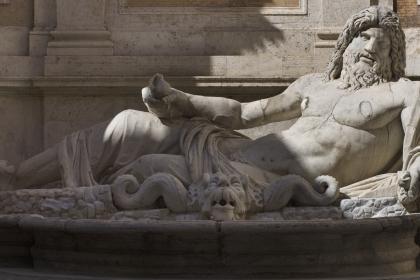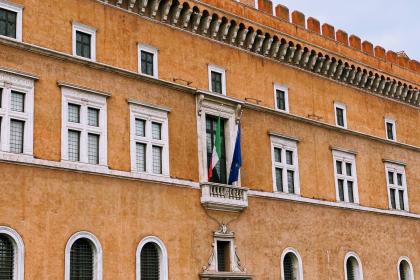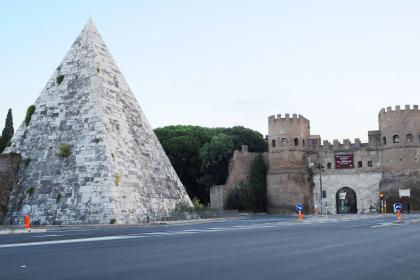In the corner of a piazza between Palazzo Venezia and the Basilica of San Marco, there is a colossal Roman marble bust, about 3 meters high. It had been on public display since the 15th century, albeit in a slightly different position than the actual one: the Romans always called it Madama Lucrezia (or Lugrezzia, in the Roman way), and the statue has gone down in history as the only female representative of the so-called "Congrega degli Arguti”, the Congregation of Wits.
Even today its identification maintains some uncertainty: it may represent the Roman empress Faustina – the wife of Emperor Antoninus – or more likely the Egyptian goddess Isis (or one of her priestesses) because of the characteristic knot of the robe on her chest. Some say the famous Piè di Marmo, a giant marble foot which is near the church of Santo Stefano del Cacco, belonged to the same statue: both the robe and the sandal barely visible today on the foot would in fact be part of the garment of the priestesses of Isis, whose cult was celebrated in nearby Iseum Campense.
According to tradition, the name by which the large bust became known derives from Lucrezia d'Alagno, the favorite of the King of Naples Alfonso V of Aragon: upon Alfonso’s death, being frowned upon by the new successor to the throne, Lucrezia left the Aragonese court and moved to Rome where she would live out her last years amid affluence and fame near the place where the statue now stands. Further confirmation of this attribution comes from the fact that the term “madama” was used in Naples but not in Rome in the 15th century.
Along with the other 5 talking statues in Rome, Madama Lucrezia was one of the anonymous voices that, with biting and irreverent satires, stigmatized government policies and the behavior of the most prominent public figures in the Rome of the Popes, including the pontiffs. During the Roman Republic of 1799, for example, the statue fell from its pedestal and the words “I can't stand any more” appeared on its shoulders, alluding to general discontent. But the statue was also the protagonist of some popular events: on 1 May, the “ballo dei guitti” was held in front of the bust adorned with necklaces of garlic, chili peppers, onions and ribbons: cripples, stragglers and decrepit old men threw themselves into dances together with the common people.
The Talking Statues

Museo Nazionale di Palazzo Venezia

 Condividi
Condividi
The Egyptian culture in Rome

 Condividi
Condividi
Information
 Condividi
Condividi
Location
To find out about all accessibility services, visit the Rome accessible section.












































